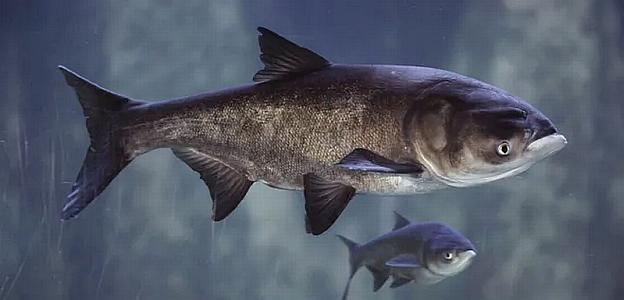 If you can’t beat them, eat them. That is the idea at the Illinois Department of Natural Resources as one approach to managing the ongoing invasion of invasive carp in the Mississippi and connecting rivers. They even propose renaming the carp and marketing the fish as copi, to make the invasive species more palatable on restaurant menus and in store refrigerator displays.
If you can’t beat them, eat them. That is the idea at the Illinois Department of Natural Resources as one approach to managing the ongoing invasion of invasive carp in the Mississippi and connecting rivers. They even propose renaming the carp and marketing the fish as copi, to make the invasive species more palatable on restaurant menus and in store refrigerator displays.
The department has even created copi recipes to persuade restaurants to serve mouth-watering dishes such as “copi fresh fish tacos, a copi firehouse fish burger, and copi smoked fish dip.”
In the 1960s and ‘70s, four species of carp were introduced into the United States from Asia. The bighead, black, grass and silver carp were imported to eat algae in wastewater treatment plants and aquaculture ponds, as well as to serve as a source of food.
It seemed like a good idea at the time but quickly got out of hand. The fish escaped into the Mississippi River, then continued their spread into other rivers and beyond. Their population grew quickly, and they began to crowd out native fish species, outcompeting them for food (different carp species feed on plants, plankton, on up in size to endangered freshwater snail species). Invasive carp are also thought to lower water quality, which ultimately harms underwater ecosystems and can kill off other native species like freshwater mussels.
Will changing the name of the invasive species be enough to make a difference? It has worked before and in several cases almost too well. In 1977, a seafood wholesaler began marketing the plentiful Patagonia toothfish as Chilean sea bass. In no time, it became one of the most coveted menu items at restaurants around the world. Chilean sea bass became so popular that today, long-lining them is one of the most heavily managed commercial fisheries in the world, and illegal fishing has practically erased the species from vast swaths of the southern oceans.
A name change may not be enough. Australia is also facing an onslaught of invasive carp and is also attempting to convince consumers to put carp on the menu. So far, results have been mixed.
New South Wales Department of Primary Industries senior fisheries manager Luke Pearce told ABC.net.au that flavor can be a concern. When under stress, carp produce histamines which create an odor and its distinctive muddy taste.
“The quicker you can get that fish on ice, the less likely the muddy taste will be present,” he said.
Slippery mucus on the fish’s body also tarnished carp’s eating reputation, but Mr Pearce said the solution was skinning.
“Once you skin your fish, that mucus is gone and you’ve got a really nice clean, fresh and tasty fillet of fish that you can do a bunch of things with,” he said.

There was a time when grey mullet became fashionable in UK restaurants, they taste like mud as that is where they find most of their food when not eating the weed of boat hulls and ingesting the antifoul toxins.
If you see it on a menu pass on by.
edit: weed off not of, sorry.
In addition to harassing native species, these carp are a hazard to humans. They can jump several feet and into a passing boat. When we did the Great Loop we had 5 of them land in the stern of our boat. In addition to leaving mucous, their skin is thin and they bleed. Tugboat captains hate them. One told about one his crew breaking his leg after being struck from behind by one.
As for the renaming, this is nothing new. Diners at restaurants pay around $23 for “monkfish” aka goosefish.. https://www.globalcitizen.org/en/content/8-fish-youve-never-heard-of-mislabeling-in-the-sea/